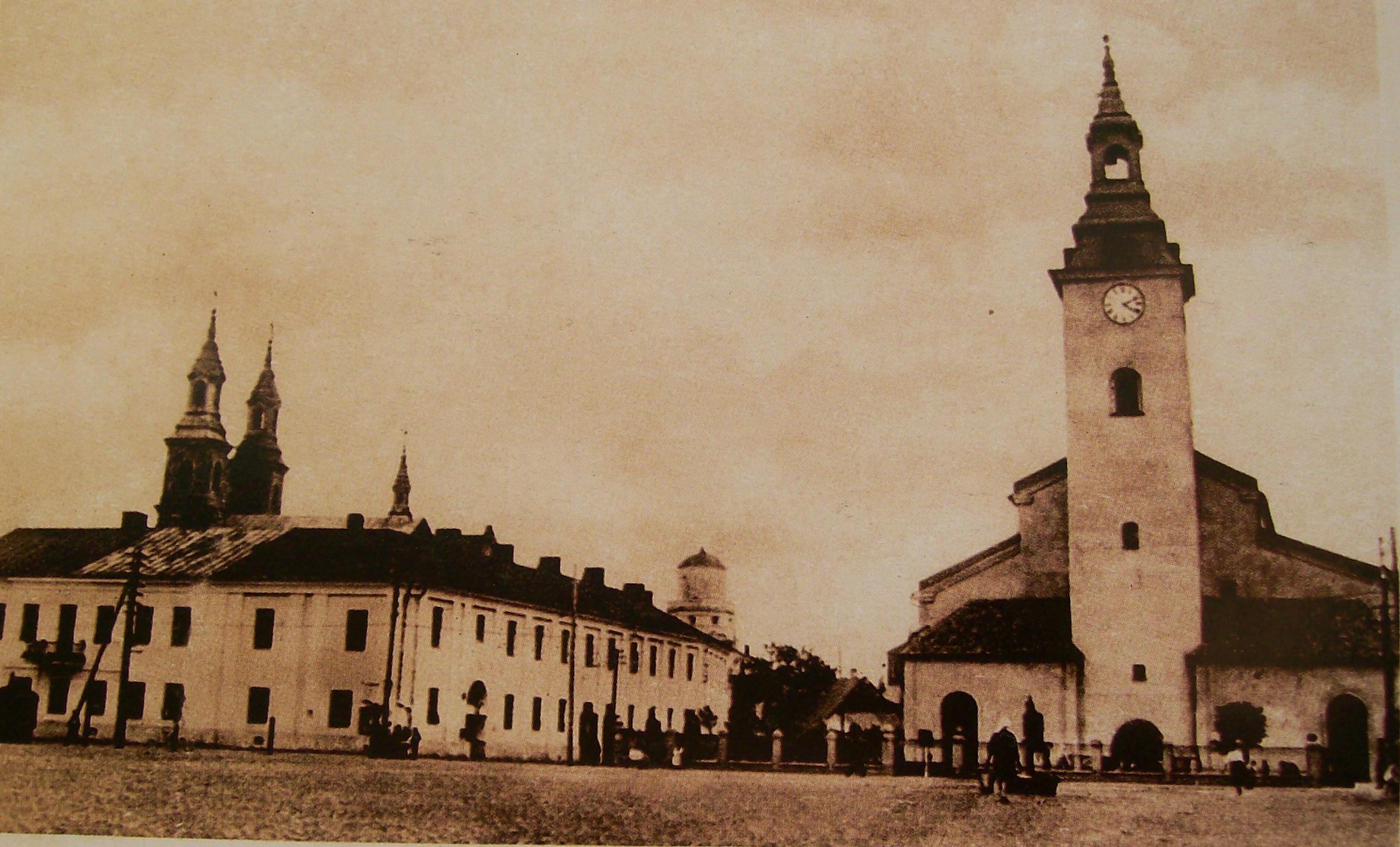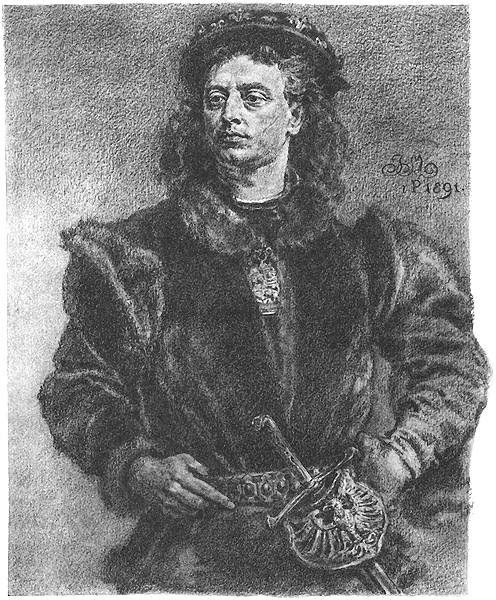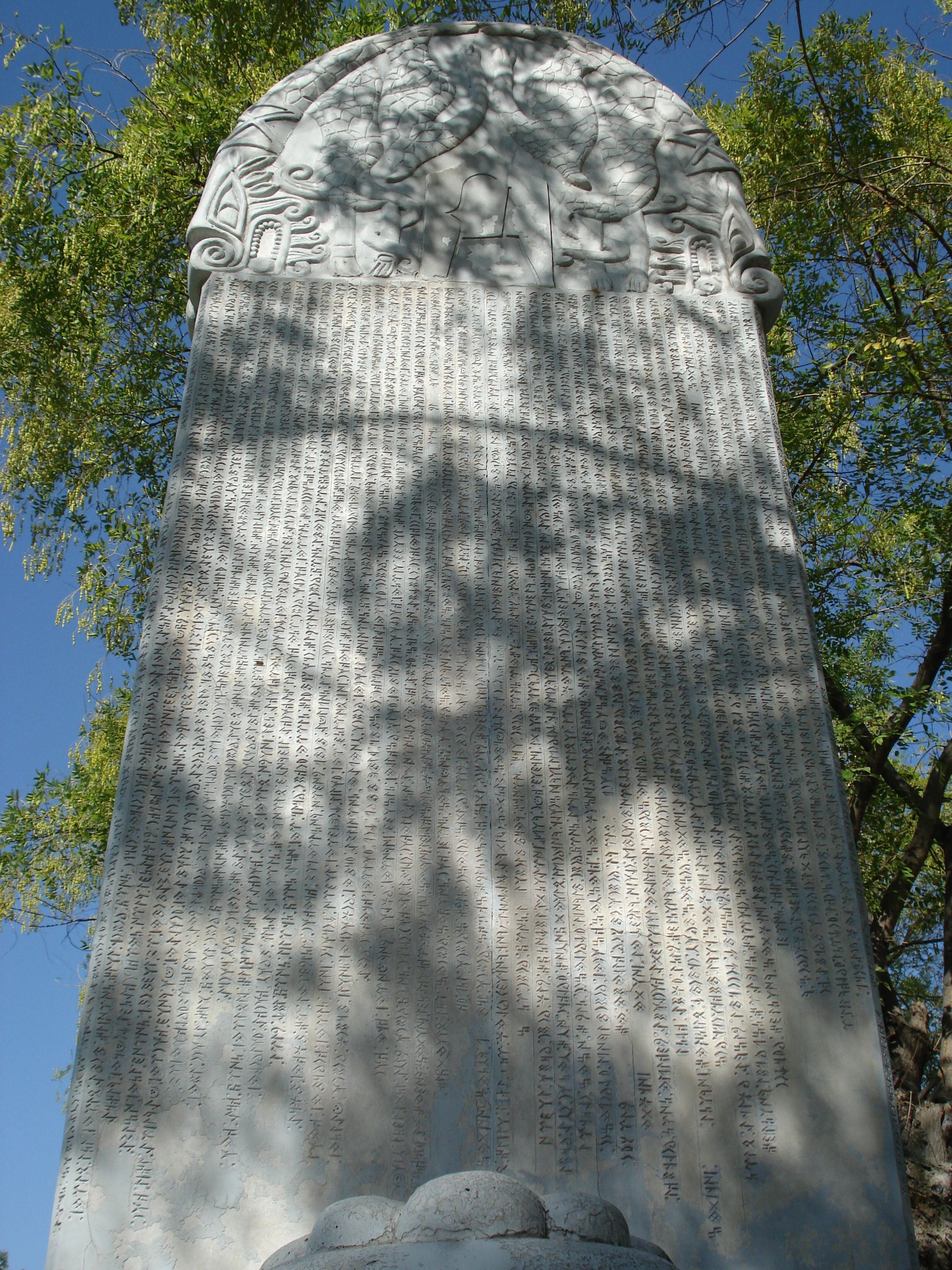|
Piotr Myszkowski (hetman)
Piotr Myszkowski (c. 1450-1505) was a Polish magnate and military commander. He was the Crown Field Hetman (1499-1501), Voivode of Łęczyca (from 1501), Voivode of Bełz (from 1499), castellan of Oświęcim (1484-1489), Wieluń (1489-1494), Rozprza (1494-1497) and Nowy Sącz (from 1498). In 1499, the king of Poland, Jan Olbracht, made him the commander of '' Obrona Potoczna'' ("General Defense"), a semi-regular force charged with protecting the southern border of the Polish–Lithuanian Commonwealth from Tatar The Tatars ()Tatar in the Collins English Dictionary is an umbrella term for different raids. References 16th-century Polish nobility[...More Info...] [...Related Items...] OR: [Wikipedia] [Google] [Baidu] |
Crown Field Hetman
( uk, гетьман, translit=het'man) is a political title from Central and Eastern Europe, historically assigned to military commanders. Used by the Czechs in Bohemia since the 15th century. It was the title of the second-highest military commander in the Crown of the Kingdom of Poland and the Grand Duchy of Lithuania from the 16th to 18th centuries. Throughout much of the history of Romania and the Moldavia, hetmans were the second-highest army rank. In the modern Czech Republic the title is used for regional governors. Etymology The term ''hetman'' was a Polish borrowing, probably from the German – captain or a borrowing of the comparable Turkic title ''ataman'' (literally 'father of horsemen'). Hetmans of Poland and Lithuania The Polish title ''Grand Crown Hetman'' ( pl, hetman wielki koronny) dates from 1505. The title of ''Hetman'' was given to the leader of the Polish Army. Until 1581 the hetman position existed only during specific campaigns and wars. After tha ... [...More Info...] [...Related Items...] OR: [Wikipedia] [Google] [Baidu] |
Łęczyca Voivodeship
Łęczyca Voivodeship ( pl, Województwo łęczyckie) was a unit of administrative division and local government in Poland from the 14th century until the partitions of Poland in 1772–1795. It was part of Province of Greater Poland, and its capital was in Łęczyca. The voivodeship had the area of 4,080 square kilometers, divided into three counties. Local sejmiks took place at Łęczyca. The city of Łódź, which until the 19th century was a small town, for centuries belonged to Łęczyca Voivodeship. The voivodeship was created by King Wladyslaw Lokietek, out of the territory of Duchy of Łęczyca, which had been established after the 1138 Testament of Bolesław III Krzywousty. It had five senators in the Senate of the Kingdom of Poland (since 1569 the Polish–Lithuanian Commonwealth). These were: Voivode of Łęczyca, Castellan of Łęczyca, Castellan of Brzeziny, Castellan of Inowlodz, and Castellan of Konary. At the sejmiks, local nobility elected four deputies to the Se ... [...More Info...] [...Related Items...] OR: [Wikipedia] [Google] [Baidu] |
Belz Voivodeship
Bełz Voivodeship ( pl, Województwo bełskie, la, Palatinatus Belzensis) was a unit of administrative division and local government in Poland from 1462 to the Partitions of Poland in 1772–1795. Together with the Ruthenian Voivodeship it was part of Red Ruthenia, Lesser Poland Province of the Polish Crown. The voivodeship was created by King Kazimierz Jagiellonczyk, and had four senators in the Senate of the Commonwealth (the Voivode and the Castellan of Belz, as well as Castellans of Lubaczow and Busk). History Bełz Voivodeship was formed in 1462 from the territories of the Duchy of Belz, after the Duchy was annexed by the Crown of the Kingdom of Poland. Zygmunt Gloger in his monumental book Historical Geography of the Lands of Old Poland gives a detailed description of the voivodeship: “Belz, on the Zaloka river, was one of the oldest gords of the Czerwien Land. In 981, the province was seized by Vladimir the Great. Recovered by Bolesław Chrobry in 1018, it again b ... [...More Info...] [...Related Items...] OR: [Wikipedia] [Google] [Baidu] |
Oświęcim
Oświęcim (; german: Auschwitz ; yi, אָשפּיצין, Oshpitzin) is a city in the Lesser Poland ( pl, Małopolska) province of southern Poland, situated southeast of Katowice, near the confluence of the Vistula (''Wisła'') and Soła rivers. The city is known internationally for being the site of the Auschwitz concentration camp (the camp is also known as KL or KZ Auschwitz Birkenau) during World War II, when Poland was occupied by Nazi Germany. Name The name of the city is of Slavic extraction, possibly derived from the owner of a Slavic gord which existed there in the Middle Ages. It has been spelled many different ways and known by many different languages over time, including Polish, Czech, German, and Latin. The town was an important center of commerce from the late Middle Ages onward. Fourteenth-century German-speaking merchants called it Auswintz; by the 15th century, this name had become Auschwitz. From 1772 to 1918 Oświęcim belonged to the Habsburg the Kingd ... [...More Info...] [...Related Items...] OR: [Wikipedia] [Google] [Baidu] |
Wieluń
Wieluń ( la, Velun) is a town in south-central Poland with 21,624 inhabitants (2021). Situated in the Łódź Voivodeship (since 1999), it was previously in Sieradz Voivodeship (1975–1998). Wieluń has a long and rich history. In the past, it used to be an important urban trade centre of the Kingdom of Poland. Several Polish kings and notables visited the town, but following the catastrophic Swedish Deluge (1655–1660), Wieluń declined and never regained its status. In September 1939, during the invasion of Poland, it was heavily bombed by the Luftwaffe. The Bombing of Wieluń is considered to be the first World War II bombing in Europe. It killed at least 127 civilians, injured hundreds more and destroyed the majority of the town. Origin of the name Wieluń was first mentioned in a 1282 document as Velun (in 1283: Vilin). The exact origin of the name has not been explained. Historians claim that either it comes from a Slavic word "vel" (which means a wetland), or fro ... [...More Info...] [...Related Items...] OR: [Wikipedia] [Google] [Baidu] |
Rozprza
Rozprza is a town in Piotrków County, Łódź Voivodeship, in central Poland. It is the seat of the gmina (administrative district) called Gmina Rozprza. It lies approximately south of Piotrków Trybunalski and south of the regional capital Łódź. The town has a population of 1,600. History Rozprza has a very long history, as it is one of the oldest Slavic Gord (archaeology), gords of Poland. It used to be the seat of a castellan, and its name probably comes from the Old Slavic word "rozprza", which means the subject of an argument, and which indicates that in the early Middle Ages Rozprza had a castellan court. In the early years of Polish statehood, this part of central Poland belonged to the Province of Łęczyca, and the province itself was divided into eight castellanies, one of which was seated at Rozprza. The Rozprza Castellany had the area of 1,150 km2., and its southern part was uninhabited. In the early Middle Ages, Rozprza was located at the intersection of tw ... [...More Info...] [...Related Items...] OR: [Wikipedia] [Google] [Baidu] |
Nowy Sącz
Nowy Sącz (; hu, Újszandec; yi, Tzanz, צאַנז; sk, Nový Sonč; german: Neu-Sandez) is a city in the Lesser Poland Voivodeship of southern Poland. It is the district capital of Nowy Sącz County as a separate administrative unit. It has a population of around 83,116 as of 2021. Names Nowy Sącz has been known in German as ''Neu Sandez'' and in Hungarian as ''Újszandec''. The Rusyn name was Novyj Sanc. Its Yiddish names include צאַנז (''Tsanz'') and נײַ-סאַנץ (''Nay-Sants''). Geography Nowy Sącz is located at the confluence of the Kamienica River and Dunajec, about north of the Slovak border, in the Sądecka Valley (''Kotlina Sądecka'') at an altitude of . It is surrounded by ranges of the eastern Outer Western Carpathian Mountains: Beskid Sądecki to the south, Beskid Wyspowy to the west, Beskid Niski to the southeast, and the foothills of Pogórze Rożnowskie to the north. The geological basis is Carpathian flysch – an undifferentiat ... [...More Info...] [...Related Items...] OR: [Wikipedia] [Google] [Baidu] |
Jan Olbracht
John I Albert ( pl, Jan I Olbracht; 27 December 1459 – 17 June 1501) was King of Poland from 1492 until his death in 1501 and Duke of Głogów (Glogau) from 1491 to 1498. He was the fourth Polish sovereign from the Jagiellonian dynasty, the son of Casimir IV and his wife Elizabeth of Austria. As a kin to the House of Habsburg, John Albert was groomed to become emperor in the Holy Roman Empire, a plan which ultimately failed. He was well-educated and tutored by scholars such as Johannes Longinus and Callimachus, whom he subsequently befriended. Heavily influenced by the Italian Renaissance, John sought to strengthen royal authority at the expense of the Catholic Church and the clergy. In 1487, he led a force against the Ottoman Empire and defeated the Tatars of the Crimean Khanate during the early phase of the Polish–Ottoman War. In the aftermath of the Bohemian–Hungarian War, John unsuccessfully attempted to usurp Hungary from his elder brother Vladislaus but was inst ... [...More Info...] [...Related Items...] OR: [Wikipedia] [Google] [Baidu] |
Obrona Potoczna
''Obrona potoczna'', variously translated into English as "Permanent Defense", "General Defense", or "Current Defense" was a hired military force in the 15th- and 16th-century Kingdom of Poland and the Polish–Lithuanian union, charged with defending the country's southern borders against incursions by the Tatars as well as occasional raids by Moldovans, Turks and Wallachians. The force originated in 1479 although similar formations had been discussed at various sessions of the Polish sejm previously. Its organization and funding was undertaken by prince John I Albert, later king of Poland, who at the time was charged with overseeing the defense of the south. While by the end of the 15th century it was a permanent formation, it was not a standing army as its members usually served seasonal shifts. The need for units of this type was recognized by the middle of the fifteenth century, as Tatar raids on the southern territories of the country - mostly Red Ruthenia and Podolia ... [...More Info...] [...Related Items...] OR: [Wikipedia] [Google] [Baidu] |
Polish–Lithuanian Commonwealth
The Polish–Lithuanian Commonwealth, formally known as the Kingdom of Poland and the Grand Duchy of Lithuania, and, after 1791, as the Commonwealth of Poland, was a bi- confederal state, sometimes called a federation, of Poland and Lithuania ruled by a common monarch in real union, who was both King of Poland and Grand Duke of Lithuania. It was one of the largest and most populous countries of 16th- to 17th-century Europe. At its largest territorial extent, in the early 17th century, the Commonwealth covered almost and as of 1618 sustained a multi-ethnic population of almost 12 million. Polish and Latin were the two co-official languages. The Commonwealth was established by the Union of Lublin in July 1569, but the Crown of the Kingdom of Poland and the Grand Duchy of Lithuania had been in a ''de facto'' personal union since 1386 with the marriage of the Polish queen Jadwiga (Hedwig) and Lithuania's Grand Duke Jogaila, who was crowned King '' jure uxoris'' Władys� ... [...More Info...] [...Related Items...] OR: [Wikipedia] [Google] [Baidu] |
Tatars
The Tatars ()Tatar in the Collins English Dictionary is an umbrella term for different ethnic groups bearing the name "Tatar". Initially, the ethnonym ''Tatar'' possibly referred to the Tatar confederation. That confederation was eventually incorporated into the when unified the various s ... [...More Info...] [...Related Items...] OR: [Wikipedia] [Google] [Baidu] |
16th-century Polish Nobility
The 16th century begins with the Julian year 1501 ( MDI) and ends with either the Julian or the Gregorian year 1600 ( MDC) (depending on the reckoning used; the Gregorian calendar introduced a lapse of 10 days in October 1582). The 16th century is regarded by historians as the century which saw the rise of Western civilization and the Islamic gunpowder empires. The Renaissance in Italy and Europe saw the emergence of important artists, authors and scientists, and led to the foundation of important subjects which include accounting and political science. Copernicus proposed the heliocentric universe, which was met with strong resistance, and Tycho Brahe refuted the theory of celestial spheres through observational measurement of the 1572 appearance of a Milky Way supernova. These events directly challenged the long-held notion of an immutable universe supported by Ptolemy and Aristotle, and led to major revolutions in astronomy and science. Galileo Galilei became a champion o ... [...More Info...] [...Related Items...] OR: [Wikipedia] [Google] [Baidu] |





